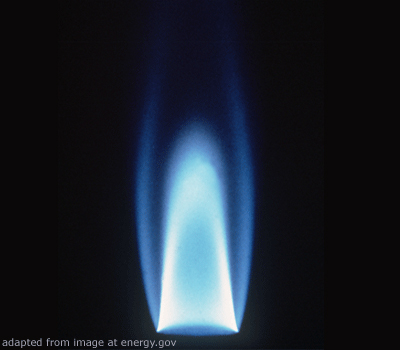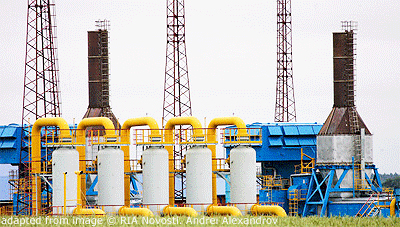A wakeup call for Gazprom

Widely considered one of Russia’s most potent weapons, Gazprom’s financials show the slow erosion of its core business.
(Business New Europe – bne.eu – Mark Adomanis in Philadelphia – May 19, 2015)
As with almost every other major Russian company, 2014 was not a particularly good year for Gazprom. In fact, at first glance, the headline numbers were nothing short of catastrophic: from 2013 to 2014, the company’s net income declined by nearly a trillion rubles, slumping from a profit of roughly RUB800bn to a loss of more than RUB130bn.
 If that sounds too shocking to be true, it’s because, from a certain perspective, it is. Gazprom didn’t suddenly forget how to produce gas or transport gas, nor did it lose its most important customers: the net income figure cited above is extremely heavily influenced by foreign currency fluctuations.
If that sounds too shocking to be true, it’s because, from a certain perspective, it is. Gazprom didn’t suddenly forget how to produce gas or transport gas, nor did it lose its most important customers: the net income figure cited above is extremely heavily influenced by foreign currency fluctuations.
A brief detour through the footnotes gives an indication as to just how heavily the ruble’s sudden swoon weighed on the company’s fortunes.
In 2013 Gazprom had a net foreign exchange expense of about RUB97bn. Now even the footnotes aren’t terribly clear about the precise manner in which Gazprom’s “exchange rate differences” arise, but from the way that they are presented (with both income and expenses clearly delineated) it would appear that Gazprom, like virtually all large international companies, uses various types of financial hedging instruments. In 2013 it looks like these hedges, while far from perfect, more or less acted as intended.
In 2014, however, the extreme and totally unanticipated volatility of both energy prices and the ruble sent Gazprom’s net “exchange rate difference” expense into the stratosphere. The company lost a shocking RUB661bn from these differences. For perspective’s sake, that is about 80% of its entire 2013 net income. Perhaps one can imagine a company being more hurt by sudden price fluctuations, but Gazprom’s 2014 forex charges are just about as bad as they come.
Gazprom also had to record roughly RUB300bn worth of bad debt expense. Without getting too far into the accounting weeds, a bad debt expense is a write-down of preciously extended loans, basically an admission that the company will not be able to get back a bunch of money that it had previously loaned out. Taken together, forex fluctuations and the bad debt expense account for about 90% of the observed decline in Gazprom’s net income.
While the financial impacts of these two items are, obviously, very real, I think it would be a mistake to focus too narrowly on them. After all, Gazprom’s core business is the production, transportation and sale of natural gas, not making loans to other businesses or speculating on changes in exchange rates. Given recent trends in energy prices and the modest rally of the ruble against both the dollar and the euro, Gazprom will likely recoup many of its 2014 losses over the course of the next year. In other words 2014 looked a little worse than it really was while 2015 will look a little better.
Badly managed
The deeper problem is that, operationally, Gazprom is just not run very well. Its headline revenue growth is respectable, but the company does an extremely poor job of controlling its costs.
One particularly easy way to get a grasp on this is simply to look at the company’s total number of employees: from 2013 to 2014 it increased from 423,000 to 445,000. Suffice it to say, most companies will not expand headcount by 5% when they are bleeding money (even if those losses are due to volatility). A normal publicly traded company that went on such a hiring spree while providing its shareholders with a negative return would have its stock decimated and its executives would be lucky to keep their jobs.
Now if those newly minted Gazprom employees were all working productively, then it wouldn’t be a problem. Even a cursory look at Gazprom’s cost structure, however, suggests that all those new hires aren’t contributing very much. From 2013-2014 sales grew by 7.9%, but the direct costs of those sales grew by 12% and general administrative expenses shot up by 29%. Gazprom, in other words, basically fits the dictionary definition of a poorly run business: its costs are growing much more quickly than its revenues.
And that is what really ought to worry the Kremlin. The forex volatility that was such an enormous (and expensive!) problem in 2014 cannot and will not last forever. There is simply no way that Gazprom will have forex loses of the same magnitude on a sustained basis. A reversion to the mean is inevitable and when that happens Gazprom will suddenly look much more profitable than it does at the moment.
But the aforementioned problems with cost management, Gazprom’s troubling tendency to both over-hire and over-spend on fixed investment, aren’t going anywhere. Indeed they’ve been problems for as long as Gazprom has existed and they’ve arguably worsened during the recent crisis.
In other words if the shock of 2014 wasn’t enough to force Gazprom to get its act together maybe nothing will be.
